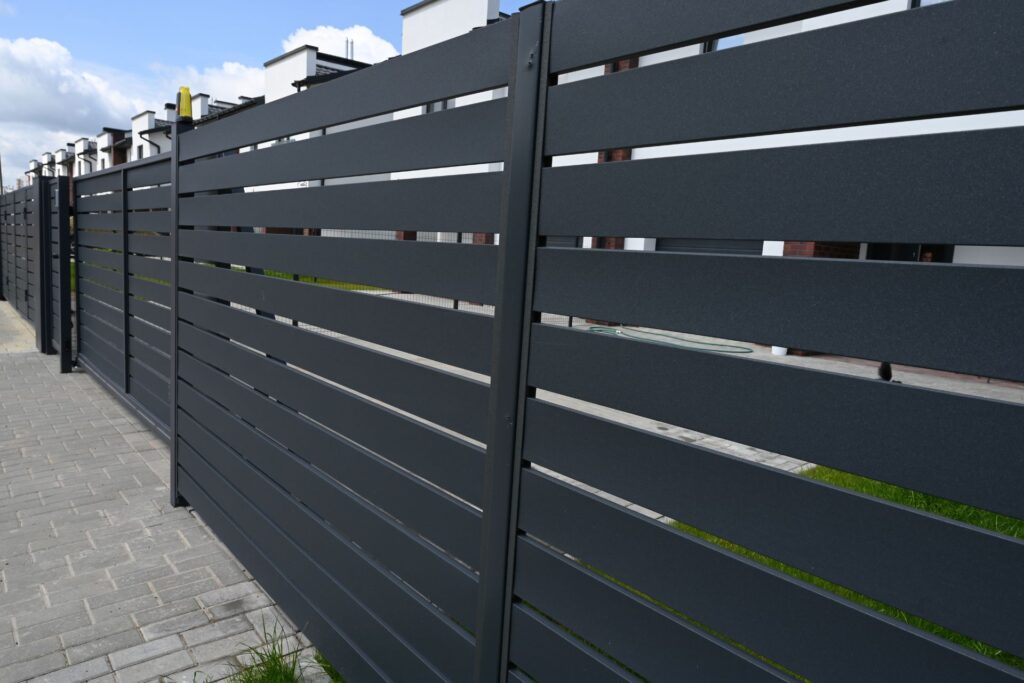When it comes to enhancing the privacy, security, and aesthetic appeal of your property, few solutions are as effective and immediate as building a fence. Whether it’s to keep pets safe, increase privacy, or simply mark the boundaries of your property, the decision to erect a fence comes with its set of considerations, the foremost being cost.
In New Zealand, where the diversity of landscapes ranges from urban sprawls to pastoral countryside, the type of fencing you might choose and the cost per meter can vary widely. Understanding the ins and outs of fencing costs in New Zealand doesn’t have to be a daunting task. Whether you’re contemplating a quaint picket fence for your urban home or a sturdy wire fence for your rural property, this comprehensive guide aims to walk you through everything you need to know about fencing costs per meter. From the factors influencing the price to the average costs of various materials and the additional expenses to consider, we’ve got you covered.
Our goal is to arm you with the knowledge you need to make informed decisions about your fencing project. We’ll break down the complexities of fencing costs into understandable segments, ensuring that this guide is as accessible to first-time homeowners as it is valuable to seasoned property developers. So, let’s dive into the world of fencing in New Zealand, where practicality meets aesthetics, and discover how to navigate the costs associated with securing and beautifying your property.
On average, wooden fences cost NZ$180 to NZ$350 per meter, wire fences are about NZ$100 to NZ$200 per meter, aluminum fences range from NZ$250 to NZ$400 per meter, and vinyl fencing costs between NZ$200 to NZ$350 per meter. These prices can fluctuate depending on labor, terrain, and additional features such as gates. Before embarking on a fencing project, consider the type of fence that suits your property’s needs and budget, and be mindful of local regulations and potential hidden costs.
Table of Contents
The Basics Of Fencing In New Zealand
Fencing in New Zealand is more than just a boundary marker or a means of ensuring privacy; it’s a blend of functionality, aesthetics, and tradition. Whether you’re in the bustling streets of Auckland or the serene landscapes of the South Island, the right fence can complement your property’s appearance while providing security and privacy. In this section, we’ll delve into the various types of fences popular in New Zealand and the factors that influence fencing costs.
Types of Fences
When it comes to choosing the right fence for your property, the options are as diverse as New Zealand’s landscape. Each type of fence comes with its own set of advantages and disadvantages. Let’s explore some common fencing types:
Wooden Fences: A classic choice, wooden fences offer a natural and traditional look that can enhance the aesthetic appeal of any property. They are particularly popular for residential areas, providing privacy and a warm, welcoming vibe. However, they require regular maintenance to prevent weather damage and termite infestation.
Wire Fences: Commonly used in rural areas of New Zealand, wire fences are practical for enclosing livestock and large properties. They are cost-effective and offer durability with minimal maintenance, though they provide little in terms of privacy or aesthetic appeal.
Aluminum Fences: Offering a modern and sleek look, aluminum fences are durable, rust-resistant, and low-maintenance. They are a popular choice for both residential and commercial properties looking for a stylish, yet functional barrier.
Vinyl Fences: Known for their durability and ease of maintenance, vinyl fences can mimic the appearance of wood without the susceptibility to rot or pests. They are becoming increasingly popular in New Zealand for their longevity and variety of styles.
In New Zealand, wooden and wire fences are particularly popular due to their practicality and alignment with both urban and rural settings. Wooden fences are favored in residential areas for their natural aesthetic, while wire fences are the go-to option for farmland and agricultural properties.
Factors Influencing Fencing Costs
The cost of fencing in New Zealand can vary widely based on several key factors. Understanding these variables can help you budget more effectively for your fencing project:
Material: The type of material chosen is the most significant factor affecting cost. For instance, high-quality timber or vinyl will be more expensive than basic wire or aluminum options.
Height and Design Complexity: Taller fences or those with intricate designs and additional features (such as gates or decorative elements) will naturally cost more due to the increased material and labor required.
Terrain: The topography of your land can also impact fencing costs. Uneven terrain, rocky soil, or the presence of obstacles (like trees or existing structures) can make installation more challenging and expensive.
Legal Considerations and Permits: Before installing a fence, it’s crucial to be aware of local regulations and whether a permit is required. Compliance with local council regulations and obtaining necessary permits can add to the overall cost of your fencing project.
In summary, choosing the right fence for your property in New Zealand involves considering both aesthetic preferences and practical needs. By understanding the types of fences available and the factors that influence their costs, you can make an informed decision that enhances the value and appeal of your property.
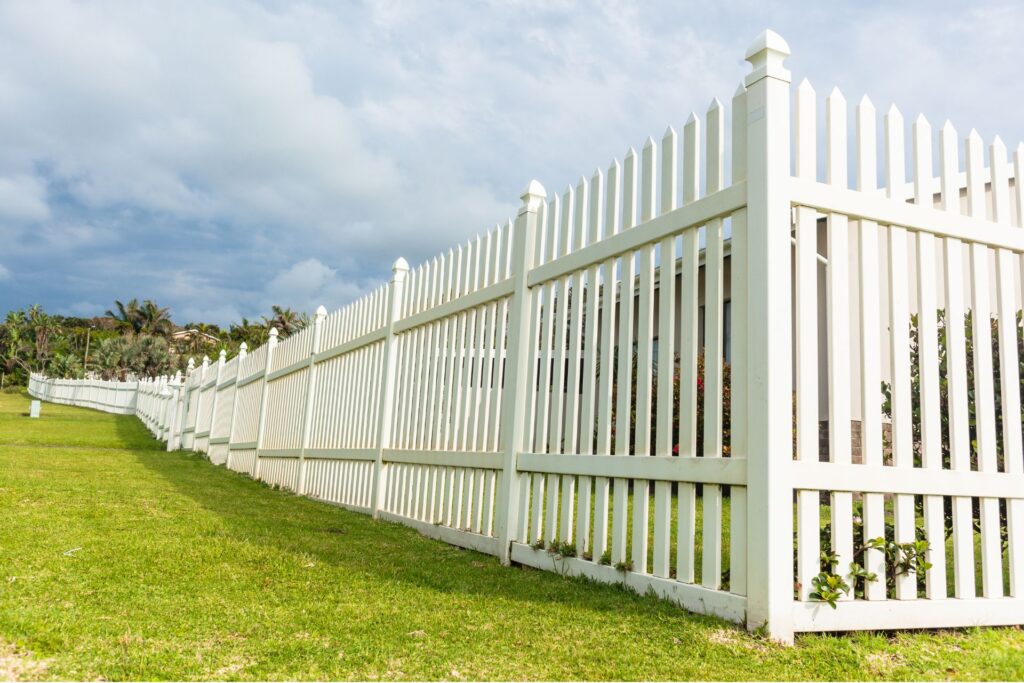
Average Fencing Costs Per Meter In New Zealand
When considering the installation of fencing in New Zealand, homeowners and property developers alike must navigate through a myriad of factors to budget effectively. Understanding the average costs associated with fencing per meter is essential for planning and executing your project without unexpected expenses. This guide breaks down the costs by material, installation, and additional considerations to give you a comprehensive overview.
Cost Breakdown by Material
Fencing material plays a significant role in the overall cost and aesthetic of your property’s boundary. In New Zealand, the most common fencing materials include timber, aluminium, and vinyl, each offering different benefits in terms of durability, maintenance, and appearance.
Timber Fencing: Timber is a classic and widely used material for fencing in New Zealand, prized for its natural look and versatility. The average cost for timber fencing ranges from NZ$75 to NZ$120 per meter. The price can vary depending on the type of wood, with premium options like cedar at the higher end.
Aluminium Fencing: Aluminium offers a modern and low-maintenance option for those looking for a durable and sleek boundary. Expect to pay between NZ$180 to NZ$250 per meter for aluminium fencing. It’s particularly popular in coastal areas due to its resistance to corrosion.
Vinyl Fencing: Vinyl fencing is a relatively new entrant in the market but is gaining popularity for its durability and minimal upkeep. The cost for vinyl fencing typically falls between NZ$100 to NZ$200 per meter. It’s an excellent choice for those looking for a long-lasting and clean look.
Installation Costs
Installation costs for fencing can vary widely based on several factors. Labour costs in New Zealand can range from NZ$50 to NZ$80 per hour, depending on the complexity of the installation, the contractor’s experience, and the geographic location.
Site Accessibility: The ease of access to your property can significantly impact installation costs. Hard-to-reach areas may require additional equipment or manpower, increasing the overall cost.
Weather Conditions: New Zealand’s weather can be unpredictable. Adverse weather conditions can delay projects and increase labour costs due to extended installation times.
Additional Costs to Consider
When budgeting for a fencing project, it’s crucial to account for potential additional costs that may arise. These can include:
Gates: Incorporating gates into your fencing design will add to the total cost. Depending on the material and design, gates can range from NZ$200 to NZ$1000 or more.
Finishes: If you’re opting for timber fencing, consider the cost of paint or stain to protect the wood and enhance its appearance. This can add NZ$15 to NZ$30 per meter squared.
Maintenance: Depending on the material, your fence may require ongoing maintenance to keep it looking its best. Aluminium and vinyl offer low-maintenance solutions, while timber may need regular treatments to prevent rot and wear.
In conclusion, the cost of fencing in New Zealand is influenced by a range of factors including material choice, installation complexities, and additional features. By understanding these costs, homeowners can better plan their fencing projects, ensuring a smooth implementation and maintenance of their property boundaries.

How To Calculate Your Fencing Project Cost
Embarking on a fencing project can seem like a daunting task, but with the right planning and calculations, you can ensure your project is both successful and cost-effective. This guide will walk you through the essential steps of measuring your property, estimating material needs, and budgeting for installation and extras, ensuring you have all the information you need to calculate your fencing project cost accurately.
Measuring Your Property
Tips on how to accurately measure fencing lengths
1. Use the Right Tools: A measuring wheel or a long tape measure is ideal for getting accurate measurements of your property lines. Ensure you’re measuring in a straight line and consider any slopes or obstacles that might affect the fence line.
2. Check Property Lines: Before measuring, confirm your property lines to avoid disputes with neighbors. You might need to consult a property survey or your local building department if you’re unsure.
3. Include Gates in Measurements: Don’t forget to account for the width of any gates you plan to install. This will affect the total length of fencing needed.
4. Round Up: It’s better to have a little extra material than not enough. After calculating the total length, round up to the nearest foot to ensure you have enough fencing.
Estimating Material Needs
Guide on calculating the amount of material needed based on fence type and property size
1. Determine Fence Type: The materials you’ll need vary significantly depending on the type of fence you’re installing. Wood, vinyl, aluminum, and chain-link fences all require different amounts and types of materials.
2. Calculate Fence Panels or Pickets: Based on the fence type, calculate the number of panels or pickets you’ll need. Most fence panels range from six to eight feet in length, while pickets are often sold individually.
3. Factor in Posts and Fasteners: Remember to include fence posts in your calculations, typically placed every six to eight feet apart, depending on the fence type. You’ll also need fasteners, such as nails or screws, which will vary based on the material.
4. Consider Waste: Include a waste factor of about 5-10% to account for cuts, mistakes, or damaged materials.
Budgeting for Installation and Extras
Advice on setting a realistic budget, including labor and unforeseen expenses
1. Get Multiple Quotes: Labor costs can vary widely, so it’s wise to get several quotes from reputable contractors to compare prices and services.
2. Factor in Extras: Consider the cost of gates, decorative elements, or enhanced security features, as these can significantly impact your budget.
3. Plan for Unforeseen Expenses: It’s a good idea to set aside an additional 10-20% of your total budget for unexpected costs, such as clearing obstacles or dealing with rocky terrain.
4. Consider DIY to Save: If you’re handy and have the time, doing the installation yourself can save on labor costs. However, make sure you’re up for the challenge and understand the scope of the project.
By carefully measuring your property, accurately estimating material needs, and setting a realistic budget that includes all potential costs, you can ensure your fencing project is a success without breaking the bank. Remember, thorough planning and preparation are key to avoiding surprises and ensuring your fencing project adds value and beauty to your property.
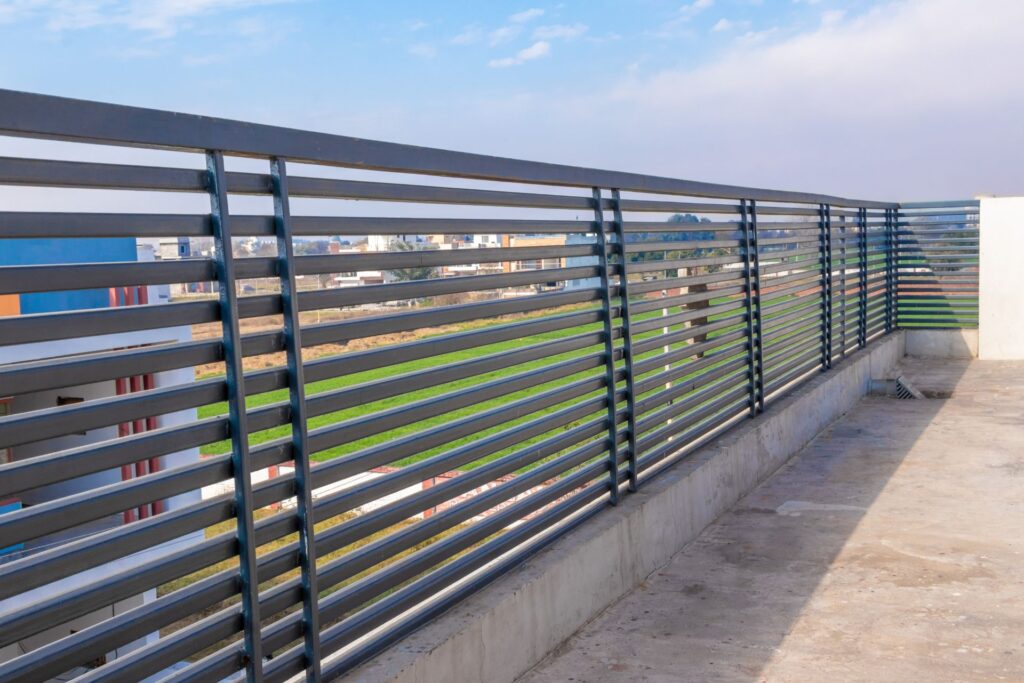
Tips For Reducing Fencing Costs
When it comes to enhancing your property’s privacy, security, and aesthetic appeal, fencing is an undeniable asset. However, the financial aspect of installing a fence can be a significant concern for many homeowners. With careful planning and strategic decision-making, it’s possible to reduce fencing costs without compromising on quality. Below, we explore practical tips for economizing your fencing project, covering material selection, installation options, and optimal timing.
Choosing Cost-Effective Materials
Selecting the right materials for your fence is crucial not only for its appearance and durability but also for managing costs. Materials such as wood, vinyl, aluminum, and chain-link vary significantly in price, maintenance needs, and lifespan.
Wood: Wood is a classic choice that offers natural beauty and versatility. While initially cost-effective, it requires regular maintenance to prevent decay and termite damage. Opting for treated wood can enhance durability without greatly increasing costs.
Vinyl: Vinyl fencing, although more expensive upfront, boasts minimal maintenance and a long lifespan, presenting excellent value over time. Its durability and the absence of a need for painting or staining make it a cost-effective choice in the long run.
Aluminum: Aluminum fencing offers a balance of durability and cost. It’s rust-resistant and requires minimal upkeep. Although it may carry a higher initial cost than wood, its longevity and low maintenance can make it a more economical option over time.
Chain-link: Chain-link fencing is the most budget-friendly option. It provides security and durability with very little maintenance needed, though it offers less privacy and aesthetic appeal than other materials.
Considering the total cost of ownership, including maintenance, repairs, and lifespan, is key to choosing the most cost-effective material for your fencing project.
DIY vs. Professional Installation
The decision between DIY and professional installation can significantly impact the overall cost of your fencing project.
DIY: Taking on the project yourself can save on labor costs, which can be substantial. However, it’s important to assess your skills and the complexity of the project. Mistakes can lead to additional costs or the need for professional intervention, negating any initial savings.
Professional Installation: Hiring professionals ensures the job is done right the first time, saving money on potential repairs down the line. It also saves time and the hassle of renting or purchasing specialized tools. When considering professional installation, obtain multiple quotes to ensure competitive pricing and check reviews to choose a reputable contractor.
Balancing the potential savings of a DIY project with the expertise and efficiency of professional installation is key to determining the best approach for your budget and capabilities.
Timing Your Fencing Project
The timing of your fencing project can influence costs due to fluctuations in demand for materials and labor throughout the year.
Off-Peak Seasons: Scheduling your project during the off-peak seasons—late fall and winter—can lead to savings. During these times, contractors may offer discounts to keep their crews busy, and materials may be cheaper due to lower demand.
Weather Considerations: While off-peak seasons can offer cost benefits, consider the weather conditions in your area. Extreme cold or wet conditions can delay projects and potentially increase costs.
Advance Planning: Planning your project well in advance allows you to purchase materials when prices are lower and schedule labor during less busy times, further reducing costs.
Strategic timing, along with careful material selection and a thoughtful approach to installation, can lead to significant savings on your fencing project. By considering these factors, you can enhance your property’s value and security without breaking the bank.
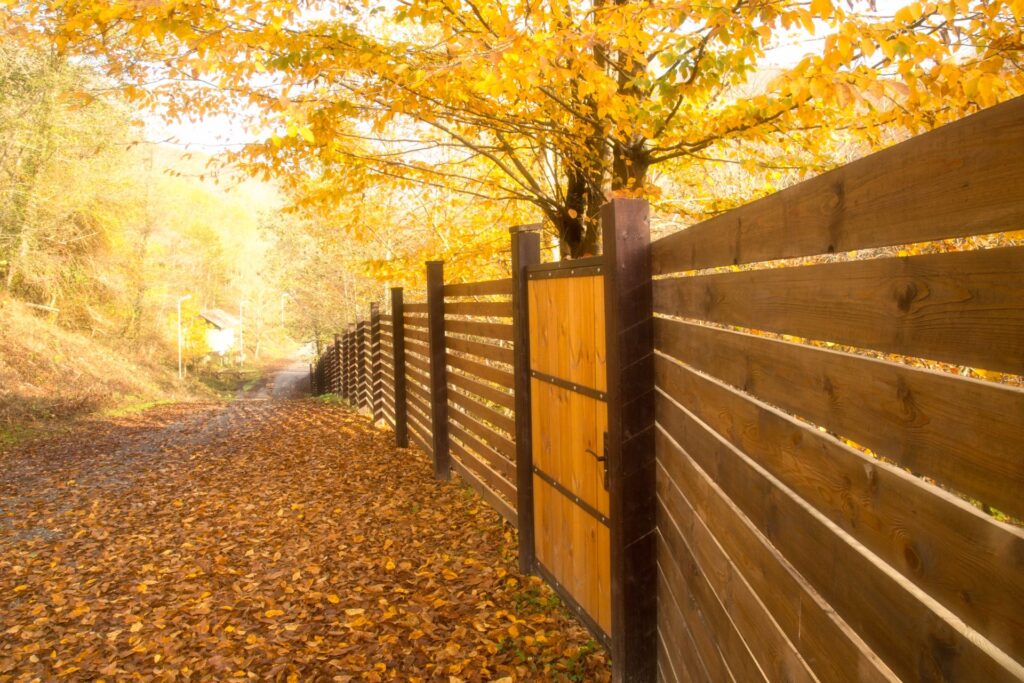
Hiring A Professional VS. DIY: What’s Best For You?
When it comes to home improvement projects, the debate between taking the do-it-yourself (DIY) route or hiring a professional is a perennial one. Fencing projects are no exception. Whether you’re looking to add privacy, enhance security, or simply boost your home’s curb appeal, deciding between DIY and professional installation is a critical first step. This section delves into the nuances of each option to help you make an informed decision that aligns with your needs, skills, and budget.
Evaluating Your DIY Skills
Before embarking on a DIY fencing project, it’s essential to realistically assess your skills and the tools at your disposal. Fencing installation is not just about putting up barriers around your property; it requires precise measurements, understanding of materials, and, oftentimes, a bit of landscaping. Ask yourself the following:
Technical Skills: Do you have experience with similar home improvement projects? Can you accurately measure, cut, and install fencing materials?
Tools: Do you have the necessary tools for the job, or are you willing to invest in them? Basic fencing projects require items such as post hole diggers, hammers, saws, and levels.
Time and Patience: Do you have the time to dedicate to this project? DIY projects often take longer than anticipated, especially for beginners.
If you’re confident in your abilities and prepared for the challenge, DIY fencing can be a rewarding experience. However, if you’re unsure about any of these aspects, considering a professional might be your best bet.
Understanding the Benefits of Professional Installation**
Hiring a professional fencing contractor comes with a plethora of advantages. Here are the key benefits:
Quality Assurance: Professionals bring years of experience and expertise, ensuring that your fence is installed correctly and built to last.
Time Savings: A professional team can complete the project in a fraction of the time it might take a DIY enthusiast, allowing you to enjoy your new fence sooner.
Warranty and Liability: Most reputable contractors offer warranties on their workmanship, giving you peace of mind. Additionally, they’re insured, which means you’re not liable for any accidents that might occur during the installation.
These benefits underscore why professional installation is often preferred for homeowners who value convenience, quality, and peace of mind.
How to Choose the Right Contractor
Selecting the right fencing contractor is crucial to ensuring your project’s success. Here are tips to help you find a reputable professional:
Research and Recommendations: Start by seeking recommendations from friends, family, or online reviews. A reputable contractor will have a positive track record.
Licenses and Insurance: Verify that the contractor is licensed and insured. This protects you in case of damage or accidents during the installation process.
Get Multiple Quotes: Don’t settle for the first estimate. Get at least three quotes to compare prices, timelines, and materials.
Ask the Right Questions: Inquire about their experience, project timeline, materials used, and warranty. A trustworthy contractor will be transparent and willing to answer all your questions.
Choosing between DIY and hiring a professional for your fencing project depends on a variety of factors including your skills, time, and budget. By carefully considering these aspects and following the tips for selecting the right contractor, you can ensure that your fencing project is a success, enhancing the beauty and value of your home.
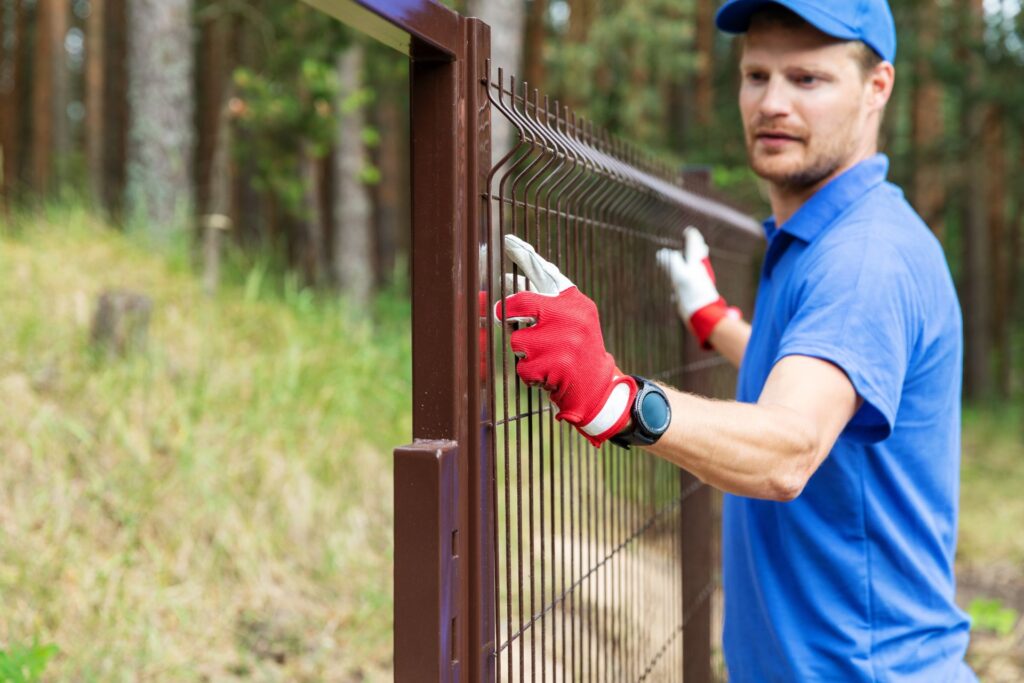
What are the most common types of fencing in New Zealand?
In New Zealand, popular fencing types include wooden fences, which offer a classic look; wire fences, commonly used in rural areas; aluminum fencing, known for its durability and low maintenance; and vinyl fencing, which is becoming increasingly popular due to its longevity and minimal upkeep.
How much does fencing cost per meter in New Zealand?
The cost of fencing per meter in New Zealand can vary significantly depending on the material and design. On average, wooden fences may cost between NZ$180 to NZ$350 per meter, wire fences around NZ$100 to NZ$200 per meter, aluminum fences can range from NZ$250 to NZ$400 per meter, and vinyl fencing might cost between NZ$200 to NZ$350 per meter. Prices can fluctuate based on factors such as labor costs, terrain, and any additional features like gates or finishes.
What factors influence the cost of fencing?
Several factors can influence the cost of your fencing project, including the choice of material, the height and design complexity of the fence, the terrain of your property, labor costs, and any legal or permit fees. Accessibility and local market conditions may also affect the overall cost.
Can I install a fence myself to save money?
Yes, DIY fencing projects can save on labor costs. However, it requires a good level of skill, the right tools, and a significant time commitment. For complex designs or materials, professional installation might be advisable to ensure longevity and stability.
What are some hidden costs I should be aware of when planning a fencing project?
Hidden costs in fencing projects can include preparation work such as clearing the land, obtaining permits, and potentially hiring surveyors to mark property lines. Maintenance costs for materials like wood, which may require regular treatment, should also be considered.
How do I calculate the amount of material needed for my fence?
To calculate the material needed, measure the total length of the area to be fenced and then determine the width and height of the panels or posts you plan to use. Factor in additional components like gates and always allow for a small amount of waste material. It’s advisable to consult with a professional or a supplier to ensure accuracy.
Are there any legal considerations I need to be aware of before fencing?
Yes, local council regulations may dictate the height, style, and placement of fences, especially in urban areas or for shared boundaries. It’s important to check with your local council and discuss plans with neighbors if the fence will be on a boundary line.
What is the best time of year to install a fence in New Zealand?
The best time for fencing projects in New Zealand is during the dryer months, from late spring to early autumn. This period offers better ground conditions for installation and minimizes delays due to weather.
How long does it typically take to install a fence?
The installation time can vary widely depending on the fence length, material, and terrain. A simple project might be completed in a few days, while more complex or longer fences can take several weeks.
How can I choose the right contractor for my fencing project?
Choosing the right contractor involves checking for experience, licensing, insurance, and references. Ask for detailed quotes, understand their process, and ensure clear communication about expectations and timelines. Reading reviews and asking for recommendations can also help in making an informed decision.
Conclusion
Wrapping up our comprehensive guide on fencing projects, we’ve highlighted the importance of meticulous planning, research, and understanding the wide range of materials and legal requirements involved. Choosing the right fence—one that complements your property and meets your needs for privacy, security, or aesthetics—requires a careful evaluation of options and a clear understanding of local zoning laws and regulations. We’ve shown how investing time in these preparatory steps can prevent costly errors and ensure the success and cost-effectiveness of your project. As we conclude, we encourage you to thoroughly weigh your fencing options and consider seeking professional advice to navigate the complexities of your project. Remember, a well-planned fencing project is an investment in your property’s value, beauty, and security, so take the steps necessary to ensure it’s done right and reflects your vision.
